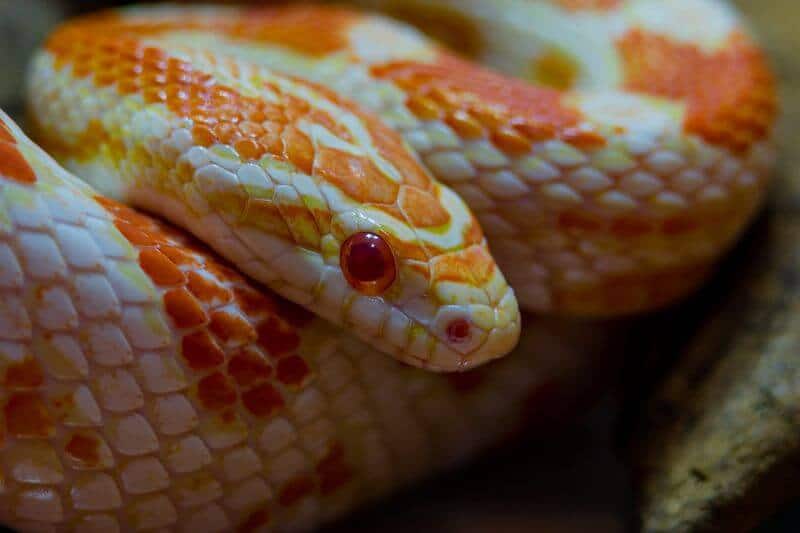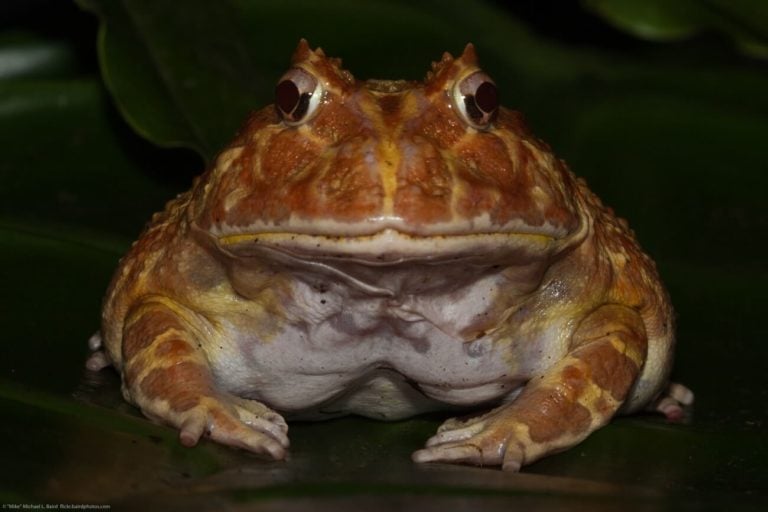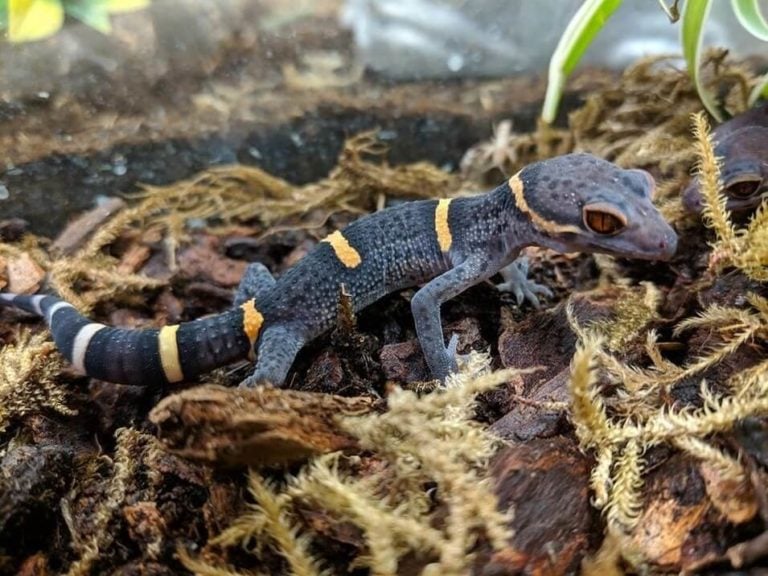Albino corn snakes are iconic and popular pet reptiles that we recommend to anyone. Not only do they look great, but they’re easy to care for as well!
This guide will teach you everything you need to know about albino corn snake care. From diet to lifespan, we’ve got you covered.
Table of Contents
Species Summary
The albino corn snake (Pantherophis guttatus) is an eye-catching color morph of the standard corn snake. Albino variants are one of the most popular morphs in the trade, and it’s not hard to see why. Known for their stunning coloration and docile nature, they make fantastic pets for first-time snake owners and seasoned enthusiasts alike.
Corn snakes are native to the southeast and central regions of the United States. You can often find them slithering around corn and grain farms, where they hunt rodents. These snakes come in a variety of morphs.
Albino corn snakes were initially from wild amelanistic snakes. The morph became so popular that snake enthusiasts continued to breed albino variants in captivity. Today, Albinos are some of the most common corn snakes available, and you can get them from pet stores around the nation.
Appearance & Colors
These serpents don’t produce black pigment. The lack of melanin is what leads to the signature albino appearance. It’s a genetic mutation that has become widespread thanks to selective breeding.
Despite the lack of melanin, albino corn snakes are not colorless. It’s quite the opposite! These snakes can take on white, pink, yellow, red, and orange hues.
Some snakes will have more vivid coloration than others. However, most still maintain that traditional saddleback pattern as wild, melanated corn snakes. The only difference is that there’s no black.
Therefore, the pattern can appear as a pale orange or red.
The belly is usually free of distinct markings. However, the color and scale arrangement creates a corn-like appearance.
Albino corn snakes are sought-after for their natural beauty. But most don’t realize that every snake can have a unique appearance. Breeders bring out distinct genetic mutations to create several albino morphs.
Some of the most popular include:
- The Albino Scaleless
- The Albino Striped
- The Reverse Okeetee
- The Butter Corn Snake
- The Snow Corn Snake
- The Creamsicle Corn Snake
- The Sunscale
Albino Corn Snake Lifespan
If you plan on getting these reptiles, be prepared for the long haul! Albino corn snakes have a lifespan of roughly 15 to 20 years in captivity. That’s slightly less than the expected 20-plus years of other corn snake varieties, but it’s significantly longer than wild corn snakes that only live six to eight years.
There are no guarantees for how long a snake of any species will live. Of course, any factors can affect this animal’s lifespan. Everything from the quality of care you provide to possible genetic health problems could come into play.
That said, you can expect nearly two decades with your snake if you provide top-notch husbandry.
Average Size
The great thing about albino corn snakes is that they’re not massive like other popular snake species. This species is a go-to for many people first getting into the snake-keeping hobby. They’re manageable and don’t require massive enclosures to keep healthy.
A full grown albino corn snake can be anywhere from 36 to 60 inches long (three to five feet). When they’re young, juveniles are significantly smaller. Typically, youngsters are around 15 inches long when available at pet stores.
Like any other pet, they grow over time until reaching their maximum length.
Albino corn snakes can get longer than 60 inches. One of the longest-recorded snakes measures 72 inches long. However, those instances are rare.
In terms of width, corn snakes are relatively thin. A mature albino corn snake is about as thick as a U.S. half-dollar coin. That’s a little more than an inch in diameter.
Albino Corn Snake Care
Keeping an albino corn snake healthy is about meeting all its environmental and dietary needs. While some snake species are notoriously difficult to keep healthy, that’s not the case here! These snakes are some of the least demanding in the snake kingdom.
The nice thing about this species is there are decades of information and knowledge-sharing. As a result, many see albino corn snakes as a beginner-friendly pet snake that most people should have no problem taking care of.
Here’s what you need to know about albino corn snake care.
Enclosure Size
Setting up an enclosure is one of the most important things to do before you bring your snake home. Albino corn snakes need a comfortable place to live. Glass aquariums or vivariums are the best options. However, you can also get PVC enclosures or keep these snakes in opaque containers.
So how much space does an albino corn snake need? That all depends on its size.
At the bare minimum, these snakes need an enclosure of about 40 gallons. Standard 40-gallon tanks work great. Typical measurements for these enclosures are 36 inches, 18 inches tall, and 16 inches deep. That’s the smallest enclosure you should have, but many enthusiasts recommend going bigger if you can.
Ideally, the length of your enclosure should match the length of your albino corn snake. For example, if you have a snake on the upper end of the average size spectrum of 60 inches, you’ll need an enclosure at least 60 inches wide. Some of the largest snakes of these species would do better with a 125-gallon tank or bigger.
Your tank doesn’t have to match perfectly. It’s unrealistic to constantly swap your snake’s enclosure for a slightly bigger one as they grow. But if you start with a 40-gallon tank, you can upgrade a few times as your snake gets larger.
Once they reach maturity, consider investing in a larger enclosure with plenty of room to roam and relax.
When choosing an enclosure, pay attention to height. These reptiles are natural-born climbers. Choosing a home that’s too short may lead to frequent escape attempts!
What To Put In Their Habitat
When designing your albino corn snake’s new habitat, you can go as simple or as complex as you want. However, there are a few basics you should cover.
The first is the substrate material. This is what you’ll put at the bottom of the tank. It makes direct contact with your snake’s body and will play a vital role in maintaining environmental conditions (more on that later).
The best substrates for albino corn snakes are natural and loose. In addition to being climbers, these snakes are burrowers. They take full advantage of every inch of the habitat, so you must provide comfortable material for digging.
Something malleable and easy to shift is ideal. The best options are Aspen shavings, coconut husks, cypress mulch, or bioactive soil mixes. You can also use reptile carpets and paper towels, but natural substances better maintain humidity levels while giving the snake plenty of enrichment.
Once you have your substrate down, you’ll need to add at least two hide boxes. Hide boxes help the snake feel more secure. They will use them to get away from noises and regulate their temperature.
Hide boxes are available in numerous materials. Whether you get plastic or wood, the shelter should be big enough for the snake to fit their entire body when curled up. Think of it as a cozy and tight safe space!
You need two boxes, each on opposite sides of the temperature gradient.
Those are the basics but feel free to do more to make your snake’s life as comfortable as possible. The best approach is to mimic the snake’s natural habitat, filling it with enriching items and decor.
Many albino corn snake owners like to include decorative plants and rocks for the snake to explore. You can also use cork bark, tree branches, and other items that allow the snake to climb. Elevated hides and natural-looking shrubbery give your snake a more fulfilling life, which is always a plus.
Temperature & Lighting
Once you have the enclosure set up, you can move on to getting the right temperature and lighting setup.
Like other reptiles, albino corn snakes thermoregulate. They’re cold-blooded animals that must move around their environment to regulate their body temperature. In an enclosed space, there’s little room to travel to different temperature extremes. As a result, you have to create them!
Proper albino corn snake care requires an understanding of the necessary temperature gradient and basking spot. Aim for temperatures around 75 to 78 degrees Fahrenheit on the enclosure’s cooler side. The cooler ambient temperatures can be as low as 70 degrees, but you should aim for 75 to stay safe.
The best way to reach those temperatures is with a lighting rig. But if you live in a colder climate where temperatures drop significantly throughout the night, you must invest in heat emitters to stay above 70 degrees after nightfall.
On the opposite side of the habitat, temperatures should be at a toasty 78 to 85 degrees Fahrenheit. Throughout the day, the snake will move between the two sides of the tank to stay comfortable.
Finally, there’s the basking spot. Position a basking lamp outside the tank to raise temperatures in one area to roughly 85 to 90 degrees. You can position the light to point at an elevated perk or branch, giving your snake a place to warm up when necessary.
Albino corn snakes are diurnal and need a normal day and night cycle to stay healthy. Set your lighting rig on a timer. Using a thermostat to control how much heat your snake gets is also a good idea.
For some reptiles, UVB lighting is paramount. However, it’s not a necessity for albino corn snakes. Even still, using UVB lamps for optimal health is a good idea.
Low-UV lighting can help maintain the snake’s sleep cycle and may improve immune health. Situate the lights on the warmer side of the temperature gradient for the best results.
Humidity
Albino corn snakes need a relative humidity of about 65 to 75 percent. We recommend investing in a high-quality hygrometer to keep tabs on humidity levels at all times.
There are a few ways to improve humidity. The easiest is to mist the tank every other day, allowing the substrate to soak everything in and dry out before another misting. There are also great humidifier systems and automatic misters that will maintain that 65 to 75 percent you want.
Adding soaked sphagnum moss inside the snake hides is also a good idea. Doing so will create an ultra-humid environment that your corn snake will take advantage of when necessary.
Don’t get lax with your albino corn snake’s humidity needs. A lack of humidity can cause substantial health problems. Keep an eye on that hygrometer and take action to keep humidity levels stable.
Water
In addition to the many decorative items we mentioned earlier, you need to install a water dish! Albino corn snakes don’t always lap up water to stay hydrated. However, these creatures will utilize the water dish in other ways.
Your dish should be large enough for your snake to slither in. Albino corn snakes love to soak! They will soak to cool off and may slither into the water when they need a little help when shedding occurs.
Secure a shallow water dish into the enclosure. But don’t glue it to the glass. You’ll need to replace the water regularly, as it’s common for snakes to defecate in their water. Clean the dish often and ensure that your snake always has a fresh supply of water available.
Food & Diet
Albino corn snakes are omnivores and need a regular diet of high-protein food to stay healthy. They’re also constrictors. In the wild, they bite their prey before latching on and squeezing the life out of them.
Some snake enthusiasts will provide life food items. Albino corn snakes love mice, frogs, lizards, and other small prey items. However, you must be careful about live prey.
There’s always the risk that animals could fight back. While the corn snake is almost guaranteed to win, they could experience injuries that cause infection.
For this reason, many experts recommend feeding albino corn snakes mice that are already dead. You can get frozen mice at most pet stores. Allow the mice to thaw and get up to room temperature before feeding them to your snake.
So how often do albino corn snakes need to eat? Babies have the most voracious appetites. Their bodies are still growing, so they need to eat once every five to seven days.
Juvenile snakes are a little older but still have plenty of growing to do. They must eat every seven to ten days until they reach a year old.
From a year on, adult snakes need to eat once every two weeks or so. Around 10 to 12 days is ideal.
Potential Health Issues
Albino corn snakes are tough! They don’t have any special diseases, and most are adaptable enough to avoid major illnesses. However, they can still encounter the health issues other snake species suffer from.
One of the biggest concerns is bacterial infections. Mouth rot, in particular, is a major issue.
These problems occur when bacteria or fungi fester in the soft tissue of your snake’s mouth. The most common symptom is inflammation around the mouth and eyes. In severe cases, you might see discharge.
Infections also lead to problems like lethargy, refusal to eat, difficulty breathing, and more. If you notice these problems, take your snake to a vet for treatment. Fortunately, bacterial infections are treatable.
Albino corn snakes can also suffer from shedding issues. Most sheds will occur without much hassle. But sometimes, the skin can get stuck and cause infection.
The best way to avoid that is by maintaining high humidity levels and providing a soaking dish.
Bacterial problems, mites, and other health problems are usually a byproduct of poor enclosure maintenance. Always monitor temperature and humidity levels to avoid any sudden changes.
It’s also important to clean and disinfect the habitat every month or so. Remove everything from the tank, replace the substrate, and use a reptile-safe sanitizing solution to scrub the habitat clean.
Doing so will keep bacteria at bay and minimize the risks of health complications.
Behavior & Temperament
One of the reasons why people love albino corn snakes so much is that they’re docile and easy-going (and of course, not venomous). Young hatchlings can be a little fussy, nipping at fingers whenever you get near. But most will calm down as they get used to living in captivity.
These snakes are generally quite peaceful and curious. They’re most active at dawn and dusk hours. You might see them slithering through the tank, gazing at you through the glass while begging to have fun.
You shouldn’t have to worry too much about aggression. But like any other reptile, respect their boundaries and gain their trust.
Handling Them
These snakes take handling very well, but you must be gentle.
It’s best to wait until you establish a good bond with your snake before you make handling a regular thing. When lifting the snake out of the enclosure, support its entire body. Your goal should be to be like a tree.
Allow the snake to climb over your arm and get comfortable. Don’t restrict it in any way, as the snake may panic and constrict your arm. Allow it to get comfortable and settle in your arm or hand.
Read your snake’s body language. If it seems like it wants to get out, return it to its enclosure. While they tolerate handling, they can get overwhelmed, so be mindful of their comfort level.
Conclusion
Albino corn snake care is something that anyone can manage. These snakes are easygoing, low-maintenance, and beautiful. It’s no surprise that they’re so popular!
If you have any thoughts or questions about the information in this guide, send us a message. We’re more than happy to lend a hand.



